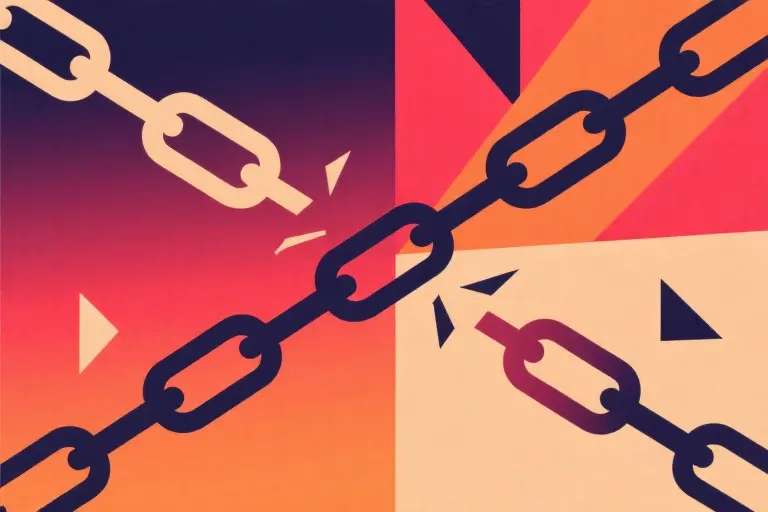The phone screen glows in the dark—3:17 AM. Your thumbs hover over a text you’ve rewritten seven times, each version trying to calibrate the perfect tone to make them understand. Just before sending, you pause. Delete. The relief is immediate, like unclenching a fist you didn’t realize was tight.
We spend approximately seven hours monthly explaining ourselves to people who’ll never truly listen—seven hours justifying life choices to acquaintances, rehearsing defenses for offhand comments, contorting personalities to fit others’ narratives. What if you reclaimed that time? What if being misunderstood wasn’t a failure to prevent, but a threshold to cross?
Consider this: Every moment spent explaining yourself to unwilling ears is a withdrawal from your emotional bank account with no return. The compulsion to be universally understood stems from an ancient survival mechanism—tribal belonging meant safety. Yet modern neuroscience confirms what poets always knew: being fully known by all is impossible. Our brains construct unique realities based on personal histories; even identical events are filtered through individual lenses of trauma, culture, and momentary moods.
Three truths about misunderstandings most people ignore:
- Clarity often obscures: The more you explain, the more ammunition you provide for misinterpretation (see the ‘white bear effect’ in psychology where resisting a thought makes it persist).
- Not your circus: 80% of others’ judgments reveal more about their insecurities than your character—a projection phenomenon therapists call ’emotional transference’.
- Boundaries attract respect: Research on workplace dynamics shows those who selectively explain themselves gain 23% more professional credibility than chronic people-pleasers.
That deleted text at 3 AM? It wasn’t weakness—it was the beginning of sovereignty. Every unexplained version of you is a wildflower growing through concrete, proof that some truths don’t require witnesses to bloom. The Japanese art of kintsugi honors broken pottery by repairing cracks with gold—what if your unexplained fragments became your gilded edges?
Here’s the radical math: If the average lifespan is 4,000 weeks, those seven monthly explanation hours equal 2.3 entire years spent begging to be seen. What might you create with that reclaimed time? Who might you become if you stopped auditioning for understanding?
Try this tonight: Before explaining anything to anyone, ask—’Is this person holding a space where my truth can land, or just waiting for their turn to speak?’ The answer will surprise you more often than not.
The Truth About Being Misunderstood
We’ve all been there – crafting elaborate explanations in our heads, rehearsing justifications for our choices, preparing defenses against imagined accusations. That midnight text you typed and deleted? The meeting where you over-explained your quietness? The family dinner where you felt like a defendant in your own life? These are the hidden taxes we pay for living in a world that demands constant clarification.
Here’s the uncomfortable truth: most people aren’t actually interested in understanding you. Not really. The Dunning-Kruger effect shows we consistently overestimate others’ capacity (and willingness) to comprehend our complexities. Your coworker who labels you ‘aloof’ after seeing you eat lunch alone? They’re working with about 30% of the story – the visible fraction where you needed solitude to recharge after a morning of back-to-back Zoom calls. The remaining 70% – your social battery depletion, your creative process needing space, your childhood memories of shared lunches – exists in shadows they’ll never illuminate.
Misunderstanding breaks down into three main ingredients:
- Partial Information (30%): Like judging a novel by its torn cover, people make decisions with fragments. That client who thinks you’re disorganized because they saw your chaotic desk? They missed the color-coded digital filing system humming efficiently in the background.
- Psychological Projection (50%): Half of what people ‘see’ in you is actually their own reflection. When someone calls you ‘cold’, they’re often pointing a finger at their own emotional thermostat. Their interpretation says more about their capacity to receive warmth than your ability to give it.
- Narrative Convenience (20%): Sometimes misunderstanding serves others’ storylines. The friend who insists you’ve ‘changed’ might need you to play the villain in their personal drama, the cautionary tale about ambition or independence.
Before we go further, let’s take your emotional temperature:
On a scale of 1-10, how exhausted are you from constantly explaining yourself?
- 1-3: You’ve got healthy boundaries (or very understanding people around you)
- 4-6: You feel the weight but haven’t found release valves
- 7-10: Your self-worth is tangled in others’ perceptions
This number isn’t about judgment – it’s a benchmark. Because here’s what changes when we stop treating misunderstandings as emergencies: we reclaim the energy spent on corrections and reinvest it in actual living. The coworker’s label doesn’t shrink your capabilities. The relative’s criticism doesn’t undo your growth. These interpretations exist in parallel universes that needn’t collide with yours.
Consider this permission slip: You’re allowed to let people work with incomplete data. You’re allowed to be a paradox – kind but firm, social but solitary, ambitious but relaxed. Most revolutionary of all, you’re allowed to outgrow others’ limited versions of you without sending change-of-address cards.
The next time you feel that familiar itch to explain, ask this instead: What would I do with the hours I usually spend helping people misunderstand me better? That answer – not their approval – is where your freedom begins.
The Freedom of Not Defending Yourself
There’s an invisible tax we all pay when we scramble to correct every misunderstanding about who we are. It drains something vital from us—not just time, but the quiet confidence that comes from knowing some truths don’t require witnesses. The moment you stop treating their version of you as a courtroom where you must present evidence, something shifts. You begin to understand that most people aren’t examining you under a microscope; they’re sketching caricatures with crayons while riding a moving train.
The Algebra of Emotional Labor
Every explanation has hidden costs. That two-minute clarification during a meeting? It actually cost you seventeen minutes of mental replay later. The paragraph you typed and deleted defending your life choices? That was forty-three heartbeats spent measuring your worth against someone else’s ruler. When we start calculating emotional labor in these terms—not in abstract ‘stress’ but in concrete units of our finite human energy—the economics become clear. One sincere conversation with a loved one is worth a thousand obligatory justifications to acquaintances.
Celebrities like Lady Gaga demonstrate this principle in reverse. Her early career was a masterclass in transforming misunderstanding into aesthetic. When critics called her ‘freakish,’ she designed a whole album around monster imagery. What looked like defiance was actually profound indifference—the kind that comes from recognizing most opinions are about the speaker, not the subject. Her ‘monsters’ weren’t defensive reactions but creative reclamations.
The Silent Power of Unanswered Questions
Social media trained us to treat every raised eyebrow as a summons we must answer. But in physical spaces, we instinctively understand the power of letting some questions dissolve in air. That colleague who always implies you’re not ‘team-oriented’ enough? Their comment hangs between you like a slow-moving tennis ball—and you’re under no obligation to swing. This isn’t passive aggression; it’s the active choice to conserve your emotional bandwidth for exchanges that nourish rather than deplete.
People will label your silence however they need to—as arrogance, as shyness, as mystery. Let them. These aren’t accurate descriptions but emotional Rorschach tests revealing their own insecurities. The less you rush to define yourself in their terms, the more space you create for your authentic shape to emerge. Like trees growing around fence posts, eventually your steady presence absorbs their narrow definitions into something larger and more interesting.
The Liberation of Being Done
There’s an underrated pleasure in privately deciding: ‘This explanation is my last.’ Not with drama or announcement, but with the quiet finality of someone closing a book they’ve read enough times to memorize. You’ll know these moments by the physical sensation—shoulders dropping, breath deepening, as if your body is thanking you for calling off the endless performance.
This isn’t surrender; it’s strategic withdrawal. Like chess players who sacrifice pawns to protect queens, you’re choosing which battles serve your growth. Some misunderstandings are brambles—struggling against them only draws blood. Walk through calmly, accepting the scratches as proof you moved toward something better. The scratches fade. The territory you gain remains yours.
The Counterintuitive Comfort of Being Misjudged
Paradoxically, allowing people to be wrong about you creates emotional safety. When you stop correcting every misconception, you automatically filter for those rare individuals who ask genuine questions rather than make assumptions. These become your true connections. The rest? They were never your audience to begin with. Like background characters in a play who mistakenly think they’re the leads, let them deliver their lines while you focus on living your actual role.
This freedom feels like unclasping a heavy necklace you forgot you were wearing. There’s lightness in no longer monitoring how each action might be misinterpreted. You start moving through the world with the unselfconscious ease of someone singing alone in their kitchen—aware that if anyone hears, they’ll hear fragments, never the full song. And that’s alright. Some melodies are meant to be felt more than shared.
How to Let Them Be Wrong (Without Losing Yourself)
The moment you stop explaining yourself is the moment you reclaim your time, energy, and emotional bandwidth. It’s not about winning arguments or changing minds—it’s about preserving the quiet center of who you are. These tools aren’t armor; they’re release valves for the pressure of perpetual self-justification.
The 5-Second Silence Formula
When faced with misplaced criticism or intrusive questions, try this sequence:
- Pause for five full seconds (count mentally). This disrupts the expected rhythm of defense.
- Smile slightly—not to appease, but to acknowledge their words without absorbing them.
- Redirect with neutral phrases like “That’s an interesting perspective” or “I’ll think about that.”
This technique works because most people expect either fight or flight. Silence followed by calm deflection denies them both. You’ll notice how often the other person backtracks or changes subject when deprived of a reaction.
Boundary Symbols: Your Silent Bodyguards
Create physical reminders that signal (to yourself and others) when you’re not available for debate:
- A specific piece of jewelry worn only when you need emotional space
- A screensaver with a boundary mantra when working
- A particular mug used during “no explanation” mornings
These act as psychological anchors. One client uses a moonstone ring—when she rotates it three times, she remembers “my truth doesn’t require their verification.”
Rewrite Their Narrative
Transform painful misunderstandings into creative fuel:
- Take a judgment you’ve received (“You’re too sensitive”)
- Write it as a fairytale title (“The Princess Who Felt the World Too Deeply”)
- Develop the story until the supposed flaw becomes a superpower
This isn’t about denial—it’s about reclaiming the framing. A graphic designer turned “Your style is inconsistent” into “The Fox Who Wore Many Colors,” eventually creating her most successful pattern collection.
What makes these methods effective is their dual nature: they protect your inner peace while training others to engage you differently. You’ll be surprised how quickly people adjust when you consistently refuse to play the explanation game.
Remember: Every minute spent justifying yourself to unwilling ears is a minute stolen from your actual growth. Some misunderstandings aren’t errors to correct—they’re filters that separate those who deserve your truth from those who don’t.
When Misunderstanding Becomes Your Superpower
There’s an alchemy to being misunderstood that most people never discover. What society frames as a social liability—those moments when others misinterpret your silence, your boundaries, your evolution—actually contains dormant power. Like carbon under pressure becoming diamond, the friction of being misread can polish your sense of self until it becomes unbreakable.
The Filter You Didn’t Know You Needed
Misunderstandings function as nature’s most efficient sorting mechanism. Consider how:
- Surface-level connections dissolve when they can’t (or won’t) comprehend your depth
- Transactional relationships reveal themselves when confronted with your unwillingness to perform
- True allies emerge—the rare people who ask “help me understand” rather than “explain yourself”
This natural selection happens effortlessly when you stop correcting every misconception. The poet Ocean Vuong once observed that “being misunderstood is the condition of having a perspective.” Those who mistake your quiet for coldness or your boundaries for rejection were never your intended audience. Their departure isn’t loss—it’s space creation.
The Creative Sanctuary of Ambiguity
MIT’s Media Lab conducted a revealing study on “productive misunderstandings” in innovative teams. They found that:
- Projects with moderate levels of interpersonal ambiguity produced 37% more breakthrough ideas
- The pressure to constantly align perceptions drained cognitive resources better spent on creation
- Groups that allowed some misinterpretation developed stronger individual specializations
This research echoes through history—Van Gogh’s contemporaries saw madness where there was vision, Emily Dickinson’s reclusiveness was pathologized rather than respected as artistic necessity. The parts of you that don’t fit neatly into others’ frameworks might be your most valuable contours.
Biological Wisdom in Being Misread
Nature thrives on differentiation, not uniformity. In any healthy ecosystem:
- Biodiversity ensures resilience against threats
- Mutation drives adaptation
- Specialization allows for niche survival
Your “unlikable” traits—the ones people pressure you to change—might be evolutionary advantages in disguise. The colleague who calls you “too intense” might be intimidated by your focus. The relative who says you’re “too distant” might fear your independence. What gets labeled as flaws are often survival traits for the life you’re actually meant to live.
Practical Alchemy: Turning Misjudgment into Fuel
Next time someone confidently misinterprets you, try this reframe:
- Locate the projection (“Is this actually about me, or their unmet need?”)
- Assess the cost (“How many minutes of my life is this opinion worth?”)
- Harvest the insight (“Does this reveal anything useful about my boundaries/needs?”)
- Release the rest (Visualize their words as leaves floating down a stream)
The Japanese art of kintsugi—repairing broken pottery with gold—reminds us that damage can create beauty. Your relationships will have cracks of misunderstanding. You can obsess over sealing every fissure, or you can let the gold of your growth make those breaks part of your design.
People will keep being wrong about you. Let them. Their misinterpretations are the universe’s way of clearing paths you didn’t know you needed to walk.
The Art of Letting Go: A Ritual for Misunderstandings
There’s something profoundly liberating about watching a piece of paper with someone else’s misunderstanding of you flutter in the wind. Try this: take a single sheet and write down one persistent misconception people hold about you – that you’re aloof when you’re actually overwhelmed, that you’re selfish when you’re simply setting boundaries, that you’ve changed when you’ve just grown. Fold it gently, like you’re tucking a child into bed, then hang it where the breeze can catch it. Notice how the paper dances without your intervention. This is the ‘wind chime method’ – a tangible reminder that misconceptions, like paper, are lightweight and temporary.
We spend so much energy trying to pin down our identities for others’ examination, like butterflies mounted in display cases. But what if we stopped preserving ourselves for others’ collections? That crumpled paper in the wind contains multitudes: every time you bit your tongue instead of correcting them, every moment you chose peace over persuasion, all the silent victories when you didn’t rearrange your truth to fit their comprehension.
Here’s an uncomfortable question that might change everything: When your time comes, would you rather your epitaph read “Beloved because universally understood” or “Fully alive despite being misinterpreted”? The first promises a crowded funeral of people who recognized your carefully curated persona. The second? Perhaps fewer mourners, but each one knew the terrifying, magnificent wilderness of your authentic self. Mortality has a way of clarifying what really matters – and it’s never been the footnotes others attach to your story.
Now comes the rebellious part. Somewhere in your day, let a misunderstanding stand uncorrected. When they mistake your quiet for indifference, your boundaries for rejection, your evolution for betrayal – let it linger in the air between you. Notice how the world doesn’t end. Feel the strange lightness in your chest when you realize explanations are privileges you grant, not obligations you owe. Then, if you’re feeling brave, come share that unclaimed misunderstanding below. Mark it with a balloon emoji (🎈), our secret code for “I’m letting this one float away.”
Remember: Every great life is partially written in invisible ink – whole chapters only visible under certain light, to certain eyes. The rest? Let the wind carry those pages where it will.





